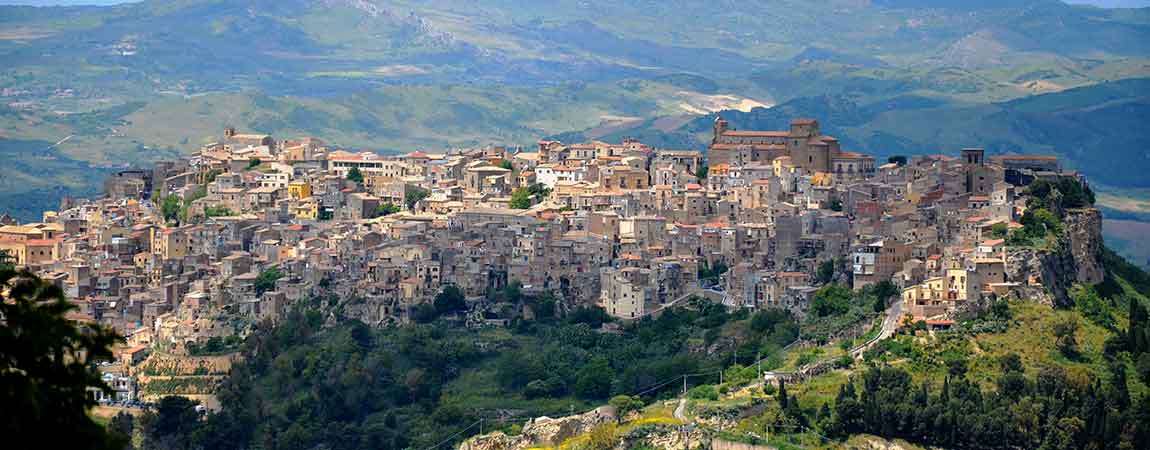
Calascibetta, whose name derives from the Arabic Xibet with which Muslims indicated the mountain where the urban agglomeration stands, together with Buccheri has entered the prestigious list of the Most Beautiful Villages in Italy.
The credit goes to its precious historic centre medieval origin which has maintained the urban fabric of the time especially in the area adjacent to the Royal Palatine Chapel, the Mother Church.
Il Village of Calascibetta it has overcome all the obstacles represented by 73 parameters that must be respected to be named among the Most Beautiful Villages in Italy where the quality that emerged at an architectural, cultural and landscape level was significant.
The analysis conducted by the National Commission of the Association of the Most Beautiful Villages in Italy carried out on 24 June with the aim of verifying the existence of all the fundamental characteristics to be admitted to the list of the Most Beautiful Villages in Italy, had a more than positive outcome and this led to the release of the official certification.
The satisfaction of the Calascibetta authorities
The Mayor declared that this recognition is a source of pride for every citizen of Calascibetta which must be considered a formidable opportunity for the relaunch and tourist redevelopment of the area. For the mayor, becoming part of the Most Beautiful Villages in Italy must represent the beginning of a development of the Sicilian town which must continue its path of valorization.
Il Village of Calascibetta it originates from what in the XNUMXth century was a simple camp of Muslim troops who had chosen the fortress in which to position themselves. But we must not forget that this territory was previously inhabited already in prehistoric times as can be seen from the presence of various necropolises such as those of Calcarella, Realmese, Malpasso and Valle Coniglio.
The village of Calascibetta today, what to see
For a tourist eager to explore the village, the itinerary must certainly start from the very center Piazza Umberto I, From Villa Comunale and from Church of Our Lady of Mount Carmel.
Right on this square stands a mighty marble fountain adorned with bronze statues, one of which represents Calascibetta himself. Don't miss a visit to the Villa Comunale where a sculpture by Baldieri dominated The Venus of Sicily, made of Comiso stone on the occasion of the 150th anniversary of the Unification of Italy.
Don't miss the Church of Maria SS del Monte Carmelo where, inside populated with works of art, there is also The Annunciation by Antonello Gagini.
The church, together with the Town Hall and the Villa Comunale were originally part of the Carmelite Monastery but of the fourteenth century church only the marble group by Gagini remains which at the end of the eighteenth century was housed in the current church.
In the surroundings of the village of Calascibetta there are the Caves in via Carcere, one of the seven itineraries of Rock Relics route on the paths of Calascibetta. It is a rock site entirely dug into the limestone rock which was used, during the Middle Ages, as a city prison. It is made up of a series of caves located on different levels and it is not uncommon to find shells and other fossils embedded in the rock. It has been calculated that the total number of caves found in the upper part of Calascibetta exceeds a thousand cavities and many are hidden by the buildings subsequently built. Caves that the poet Goethe also mentioned in his Journey to Italy, citing Calascibetta.
Weather permitting, we also report the Church of San Domenico currently Orthodox Parish dedicated to St. John the Baptist. Inside there is a valuable stoup created by Antonio Lo Vecchio, as can be seen from the Latin wording that can be read.
Close to Fortress Church of St. Peter, there is an open space of medieval origin a Saint Peter Square, where the Norman Tower built by Count Ruggero d'Altavilla to defend against the attacks of the Arabs commanded by Castrogiovanni at the end of the year XNUMX.
Another pearl of the Borgo di Calascibetta is the Mother Church dedicated to Saint Peter , Royal Palatine Chapel. The religious building was built in the first half of the fourteenth century at the behest of King Peter II of Aragon and represents the most significant monument in the city which the king himself later elevated to the Royal Palatine Chapel.
These indications are sufficient to consider a visit to the Borgo di Calascibetta, a destination to be included in a tour to discover the beauties of Sicily between art, history and culture.
© Image by Yulka-lucia, CC BY-SA 4.0, via Wikimedia Commons









